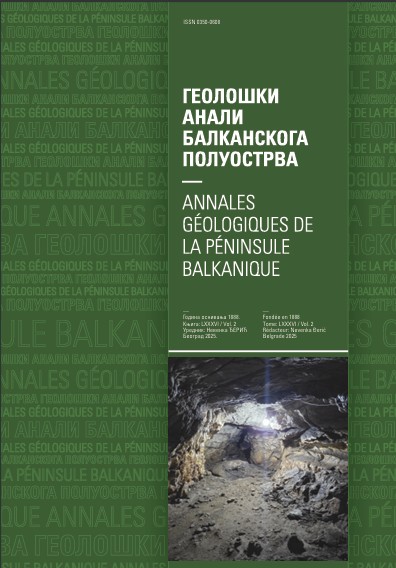Middle Miocene Badenian transgression: New evidences from the Vrdnik Coal Basin (Fruška Gora Mt., Northern Serbia)
Abstract
The latest field investigation of the Vrdnik Coal Basin as well as new data from numerous boreholes enabled the finding of an unconformity between the undivided continental-lacustrine Lower Miocene and the marine Middle Miocene Badenian. The different terrestrial-lacustrine sediments indicate a very mobile and dynamic environment (according to known drilling data, the total thickness of these deposits reaches up to 300 m). All these rocks belong to the Vrdnik series (Vrdnik Formation). The evolution of the Vrdnik series is distinguished by several stages (e.g. pre-lacustrine, lacustrine, peat-swamp, etc.). Each of these phases was proved by their sedimentologic and structural characteristics. On the other hand, among the fossils, only the swamp flora remains (Sequoia, Laurus, Taxodium, Glyptostrobus, etc.) and poor and fragmented ostracode valves (Candona sp.) were documented. Presently, the exact stratigraphic position of the Vrdnik series is unknown. Discordantly over the mentioned rocks, real marine sediments of the Paratethys Sea occur. To date, it was a completely unknown subsurface distribution of these sediments. Among a few types of rocks that have a small distribution, the so-called the Leitha limestones (Middle Miocene, Badenian) have great significance (up to 98% of CaCO3). The total thickness of the limestones reaches up to 70 meters (borehole B-11). The findings of key foraminifer species (Orbulina - Globigerinoides Zone) indicate an early Badenian (Moravian) transgressive event (ca. 15 Ma). Lithologically, it is represented by gray, sandy marls and sandy clays, coarse-grained sands and microconglomerates in the base of the mentioned limestones (boreholes B-11, B-15, B-19, and B-21) with a total thickness of up to 15 meters.
Copyright (c) 2022 Geološki anali Balkanskoga poluostrva

This work is licensed under a Creative Commons Attribution 4.0 International License.










